Blog by Marike Boertien (liaison-officer at UT of Novel-T), Leonie Bosch-Chapel (Centre of Expertise of T&L), Ineke ten Dam (4TU.CEE @UT) and Raymond Loohuis (senior lecturer Strategic Marketing & Servitisation)
The University of Twente (UT) has many years of experience with project education as leading didactical method in all bachelor programmes. We have recently been exploring the potential of challenge based learning (CBL) as a natural next step. Some projects in UT project education already have the characteristics of what we (the authors) view as CBL:

- students work in teams
- on a complex, open and authentic problem (the challenge) coming from a provider outside the university
- that requires a broad scope; the challenge must be such that students go beyond the boundaries of their own discipline(s) and also include the perspectives of different stakeholders in society in the process and solution and
- the external challenge provider is actively involved and in contact with the student groups during and at the end of the process (the provider can be a company, a non-profit organisation or a more abstract provider like ‘society’ or the United Nation’s Sustainable Development Goals – in case of an abstract provider an external expert or expert group is involved to represent the provider).
Logical next step
Challenge based learning seems to be a logical next step for the UT. As described in Shaping 2030, the new strategic plan of the UT, the university’s main mission is to contribute to the development of a digital, fair, and sustainable society. The UT is well-known for its ability to bridge societal and academic challenges and will continue to do so not only by responding to changes in society but also and increasingly by initiating these changes. Challenge based working is seen as an excellent way to realise this. One of the intermediate goals in Shaping 2030 is that already in 2023 30% of its education, research, innovation and support will be challenge based. In addition, the ECIU-university, funded by the EU, in which the UT is one of the leading partners, will be fully challenge based. New challenge based modules and courses will be developed and launched. Also, a new Innovation of Education Lab will be established to support the development and implementation of CBL education and other innovations in education.
Strategic theme
Although every university seems to use its own definition and defines its own set of characteristics, the CBL movement is booming and one can learn much from other lecturers and institutes. CBL is one of the strategic themes for the next four years of the 4TU.Centre for Engineering Education. The University of Eindhoven has started this blog. They describe the benefits of CBL and what students are expected to learn by the CBL experience, followed by a description of their CBL plans and what they are currently working on. In this post we focus on CBL at the University of Twente.
We have asked two persons already involved in CBL at the UT to give their views on the values and challenges of CBL. One of them is Raymond Loohuis, an early adopter at the UT. The other is Marike Boertien, liaison officer of Novel-T and CBL facilitator who looks at it from the perspective of the challenge providers. We will wrap up with an overview of issues that every Higher Education institute will (need to) address when considering using CBL as an important educational approach in their programmes.
Dr. Raymond Loohuis: lecturer and CBL pioneer

How did you learn about CBL? Why did you start with CBL in your courses?
My first encounter with something that I came to know later as challenge based learning was in 2017. In that year, we visited Linköping University in Sweden as one of our ECIU partners to learn about their CBL programme that they had run successfully for many years as a project course elective. This 8 EC programme, called inGenious, is geared to let student with different educational backgrounds work collaboratively to solve real life challenges offered by external stakeholders, so called challenge providers. Challenge providers can be private companies but also public organisations such as municipalities or health care institutions. Each challenge can be characterised as a wicked problem for which no solution is readily available. A key feature of inGenious, and typically challenge based, is that students are left free in finding solutions for their challenge. Yes, it is their challenge for which they receive support from educators and facilitators not only to produce a promising solution for the challenge, but also in their learning process. InGenious is all about students obtaining competencies that help them to successfully embark on difficult challenges and problems in their future careers. In doing so, students learn for instance creative thinking, presenting skills, effective communication with various stakeholders, prototyping etc. So, the outcome is equally important as the oftentimes iterative learning process itself. Regarding the outcome, students need to present and ‘sell’ their solution to the challenge provider for a large audience. It is their intellectual property written in a contract. However, the challenge provider has the first right to accept or reject the solution. In case of acceptance, students receive a financial reward (max. 6000,- Euro). In case of a reject, student teams can do what they want with the idea. Some teams will start their own venture to further develop their solution and get support from the University of Linköping in doing so.
And inGenious had inspired you so much that you decided to use CBL as well?
Yes indeed, we adopted the inGenious programme and started a pilot in 2018. We choose one of our High Tech Human Touch (HTHT) elective modules ‘New Technology and Business Development’ as it provides a good structure to create mixed teams of students with different backgrounds. We selected three teams of students who volunteered to work on challenges provided by external stakeholders who were interested enough to embark on this new learning framework. The other student teams in this module were just working on their group project making use of the template and tutorials provided. So, we had two different learning frameworks ongoing at the same time in one module. The inGenious pilot teams where trained on design thinking to explore, select and evaluate their solutions in close collaboration with stakeholders. In evaluating their learning experience, students indicated that they loved to be in the driver seat of their own learning process, collaborating with the challenge provider and calibrating their mutual expectations. In contrast to the students who followed the regular programme, the inGenious teams felt very much responsible for each other’s contribution and showed a high level of ownership for their potential solution: it was theirs and not something they did for a stakeholder or lecturer. I had rarely seen this level of engagement before.
With some improvements made, we repeated the pilot in the same module in 2019 and currently we are in the process of expanding inGenious to other HTHT modules supported by the ECIU-university team, NOVEL-T and our Education Centre CELT.
Are you happy with the way CBL is now applied in your module?
I certainly am. However, apart from the good experiences and evaluations, there are still challenges to overcome in the design and execution of inGenious (or perhaps in any CBL framework).
First, attracting challenges and making them suitable for challenge based learning requires warm relationships with external stakeholders which is needed to manage their expectations given the unpredictable nature of CBL. One never knows how useful the outcome will be for the challenge provider. The role of a facilitator (intermediate role between challenge providers, student teams and lecturer) is essential.
Second, match making between challenge provider and student teams is a critical step in inGenious and educators need to take an important role in this part. This is because not only the challenge needs to be defined and tailored to the timeframe. It also requires that learning activities and resources are assigned, while ensuring the commitment of the challenge provider during the learning process.
Third is the issue of assessment in CBL. In this, the learning process and designing a possible solution are equally important. When taken seriously, CBL is about the attainment of individual learning goals set (within limits) by students prior to the start and these goals are mostly focused on enterprise skills (in the case of my course on Technology and Business Development) and/or higher order skills. During the challenge, students require planned and on demand coaching and feedback to ensure that the learning goals can be met. This needs to be monitored and documented during the course or CBL unit for assessment purposes. This mix of guidance and assessment of the process is very critical and a challenge for any educator involved who are dominantly used to summative assessments or intermediate feedback focused on the outcome.
What do you see as the value of CBL?
 In my opinion, we should educate our students to make them capable of solving complex societal and industrial challenges in their future careers. By this assertion, I mean skillful people who are able to deploy their higher order skills to embrace complexity, don’t take anything for granted, can think and act independently, and mobilise multidisciplinary knowledge to critically assess and explore workable sustainable solutions for challenges in many areas. Given its features, a CBL framework might be a promising vehicle to realise such qualities and perhaps even outperform other related educational strategies that are presently used in higher education. What makes CBL promising is that it really bridges the needs of society and that of students and opens ways for, what I term, instant valorisation and one with potential serious impact. Universities too can reap the benefits from this educational model and find ways to capitalise on this in the near future. CBL is already practiced successfully at the Tech Monterrey in Mexico that can be considered as a leading institution in this regard.
In my opinion, we should educate our students to make them capable of solving complex societal and industrial challenges in their future careers. By this assertion, I mean skillful people who are able to deploy their higher order skills to embrace complexity, don’t take anything for granted, can think and act independently, and mobilise multidisciplinary knowledge to critically assess and explore workable sustainable solutions for challenges in many areas. Given its features, a CBL framework might be a promising vehicle to realise such qualities and perhaps even outperform other related educational strategies that are presently used in higher education. What makes CBL promising is that it really bridges the needs of society and that of students and opens ways for, what I term, instant valorisation and one with potential serious impact. Universities too can reap the benefits from this educational model and find ways to capitalise on this in the near future. CBL is already practiced successfully at the Tech Monterrey in Mexico that can be considered as a leading institution in this regard.
Ir. Marike Boertien: liaison-officer at Novel-T, facilitator for inGenious
Raymond emphasizes the importance of the challenge provider for CBL. Are the providers interested to perform this role; what is the value for them?
CBL offers plenty of opportunities, not only for students and lecturers but also for externals who act as challenge providers and partners. These challenge partners might be active in their business, in governmental bodies or not-for-profit organisations. When they are actively involved during the challenge, challenge based learning becomes challenge based Innovation and this indeed has often led to some form of innovation.
For innovation to be the result of challenge based education, it is essential that the challenge providers step up and become real challenge partners. We look for providers that feel the need, are curious about new insights and want to be inspired. Providers that search for the bigger picture, that are not just looking for a quick fix or a final report but do acknowledge the added value to experience the design thinking journey with the students, whatever the results. Our challenge providers have a growth mindset. They act as learners themselves: they want to learn collectively.
Challenge based innovation has the potential to have a lasting impact on the external partners. Working together on the challenge, support is created for the results, increasing the odds of implementation of the results. But it is not only the results that count. The active challenge partner learns too and should be able to apply the way of working in its daily business. Building solutions and new insights go hand in hand with learning new skills, creating double impact. And maybe in the future, the challenge partner will also receive official credentials for this type of learning.
So, you say that active participation of the provider leads to more value for everyone?
Definitely! When my colleague Wilbert Pontenagel introduced the predecessor of inGenious in 2016, I got enthusiastic about the concept. Especially the way transdisciplinary student teams are in control of the rights of their solution design (IPR) creates a new balance between challenge provider, students and lecturers. The students feel in control and act on it. They become owner of their process, both in learning and content wise. And in case the challenge partner does not want to use the results of the project, students might even build their own startup.
And when students collaborate closely with the challenge partner, they learn many soft skills. Which stakeholders are involved in the challenge and how? How do we interact with them? How do we maintain a network with them? How do we approach contacts professionally when we don’t know this stakeholder? These are valuable skills we want all graduates to possess. Being able to interact on a regular basis with their challenge partner opens the possibility for students to truly learn how things work, not only from a technical point of view but especially in the ‘real world’. Experience that might not always be so tangible but is very valuable.
What type of challenges are you looking for?
When considering challenge based innovation, special care must be spent on crafting the challenge. In our view the challenge should be formulated on a conceptual level. This enables a transdisciplinary approach, giving space to explore and reframe the challenge. It may even be a wicked problem. Why? Because for these kinds of challenges the challenge partner has just as many questions as the students, creating a level playing field.
How do you see your role as facilitator?
Maintaining such an intensive relationship between the students and the challenge partner puts a heavy burden on the university staff. Here I play a role as an independent facilitator. I interact between students, challenge partner and lecturer. There is a good reason for putting extra effort in: the facilitator guards the balance between the actors, thus enabling all participants to nurture their growth mindset and creating full impact. The impact we strive for in challenge based innovation!
The facilitator has also a crucial role in finding providers that are willing to cooperate in CBL and in challenge selection and definition.

Some of the challenges of CBL
In its vision for education in 2030, the UT has reserved an important role for CBL. CBL has appeared in visions and strategic plans of many other Higher Education institutes as well and many educators see the potential of CBL. However, experience with CBL is still limited and clear frameworks are hardly available yet. Also the UT is still investigating and debating what the exact role of CBL in the programmes will be. The new Innovation of Education Lab is set up to have a leading role in the debate and in supporting modules and courses that are experimenting with CBL. We list a couple of issues, based on the perspectives of Raymond and Marike:
- First of all, what is CBL?
For Marike and Raymond the active involvement of the external stakeholder is crucial. It is the fourth characteristic of CBL that we have defined in the introduction, a characteristic that is often missing in other definitions. At the UT some projects in the bachelor and master programmes already have the four characteristics and could be considered CBL, leading the way for other teacher teams.
- What is the place for CBL in the curriculum?
In the master and last year of the bachelor or also in earlier years? How much disciplinary basis is needed for CBL?
Can CBL be the main method in a whole curriculum? Raymond reports that students appreciate the freedom they get in way of working and solution and every student can define his own learning objectives. The other side of the same coin is that it is difficult to build a coherent curriculum since every group and every student learns other things. Will students have the required entry level for new modules and how can we guarantee that every student has the required end level for the degree? It is probably for this reason that almost all examples of CBL that we know of are elective modules or in last years of the programme where these issues are less problematic. CBL might mean that we have to make fundamental changes to curricula. What is the best mix of CBL and other teaching methods in a curriculum? Is 30% challenge based education (in Shaping 2030) a good percentage for our programmes?
- What is the place of CBL in a module?
What is a good balance in time between the taught subjects, labwork and the challenge in modules? In inGenious students get taught subjects before and parallel to working on the challenge. Can the challenge be the umbrella for a whole unit? Is there a minimum size for challenges? What is the optimal balance and what are important factors for the decision?
- What are good challenges?
Marike prefers challenges that are formulated at conceptual level, often wicked problems. What does that mean in practice? And are these types of challenges always the preferred choice or is it better to vary the type of challenges e.g. depending on how far students are in the programme?
Do you need a new challenge for every student group (as in inGenious) or can several or all groups in a module work on the same challenge? Probably easier for the educator but is it scalable and do-able for the challenge providers to interact with multiple teams?
- Is CBL appropriate for every student and every student group?
In inGenious student groups volunteered. What if all students have to work on challenges? Will we still have the current positive outcomes?
In inGenious student groups are mixed; they come from different programmes and disciplinary backgrounds. Are mixed groups, from different disciplinary backgrounds, institutes and/or countries required? Does CBL still work well when students have the same disciplinary background? What groups sizes are best?
- What about guidance and assessment?
What guidance do student groups and individual students need and who will provide that? As already mentioned by Raymond, how is the coaching role of teaching staff combined with assessment of the learning achievements? What are specific tasks for the educator, the challenge provider, the facilitator? Can student-assistants be trained for these tasks? What kind of assessment is needed?
- How to best cooperate with the external challenge provider?
Raymond and Marike both mention that it is a challenge to find challenge providers who are also willing to partake in the learning process. We add the issue of ownership here. Especially when the challenge provider is a company, it has to be discussed and laid down in an agreement who the owner of the resulting work will be. In the inGenious project the students are the owner with the company having the first right to buy the idea or prototype.
- And last but not least, what do the students really learn in CBL?
Ambitions and expectations are high and learning outcomes seem promising. But do we indeed achieve these? What are crucial factors that determine whether the intended learning objectives are reached? Solid research on the effects and outcomes of CBL is needed.
The coming years the UT, also in the context of 4TU.CEE, will keep on investing in experiments and projects to learn more about the design and the effects of CBL. It will be an interesting journey for programme managers, lecturers, education scientists and challenge providers alike. One conclusion we can already draw, CBL has indeed the potential to bridge societal and academic challenges and will help to put society into the centre of our education.








 In my opinion, we should educate our students to make them capable of solving complex societal and industrial challenges in their future careers. By this assertion, I mean skillful people who are able to deploy their higher order skills to embrace complexity, don’t take anything for granted, can think and act independently, and mobilise multidisciplinary knowledge to critically assess and explore workable sustainable solutions for challenges in many areas. Given its features, a CBL framework might be a promising vehicle to realise such qualities and perhaps even outperform other related educational strategies that are presently used in higher education. What makes CBL promising is that it really bridges the needs of society and that of students and opens ways for, what I term, instant valorisation and one with potential serious impact. Universities too can reap the benefits from this educational model and find ways to capitalise on this in the near future. CBL is already practiced successfully at the Tech Monterrey in Mexico that can be considered as a leading institution in this regard.
In my opinion, we should educate our students to make them capable of solving complex societal and industrial challenges in their future careers. By this assertion, I mean skillful people who are able to deploy their higher order skills to embrace complexity, don’t take anything for granted, can think and act independently, and mobilise multidisciplinary knowledge to critically assess and explore workable sustainable solutions for challenges in many areas. Given its features, a CBL framework might be a promising vehicle to realise such qualities and perhaps even outperform other related educational strategies that are presently used in higher education. What makes CBL promising is that it really bridges the needs of society and that of students and opens ways for, what I term, instant valorisation and one with potential serious impact. Universities too can reap the benefits from this educational model and find ways to capitalise on this in the near future. CBL is already practiced successfully at the Tech Monterrey in Mexico that can be considered as a leading institution in this regard.
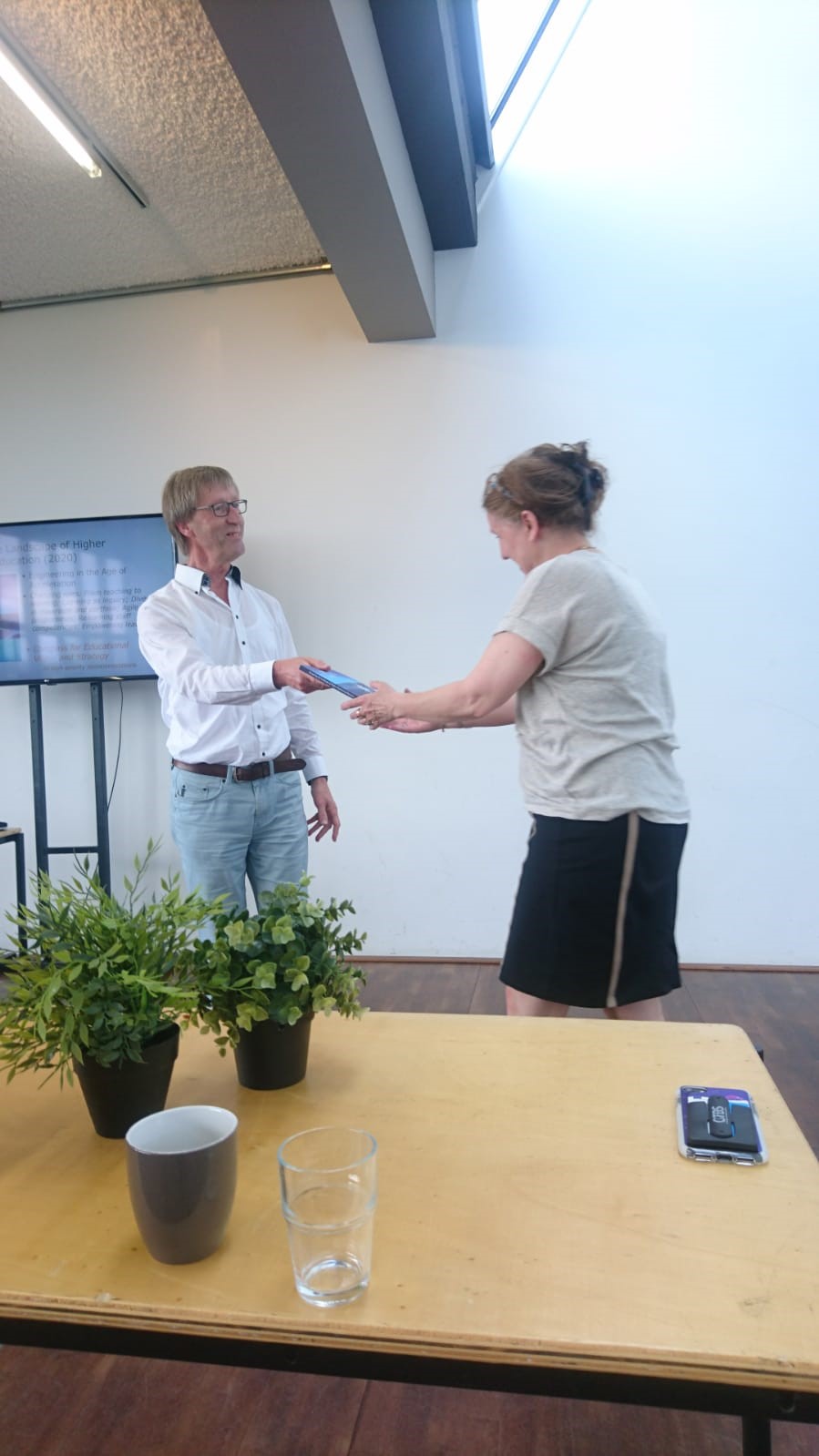
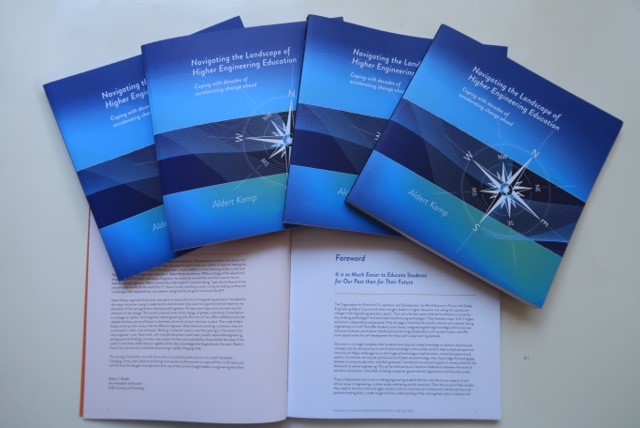
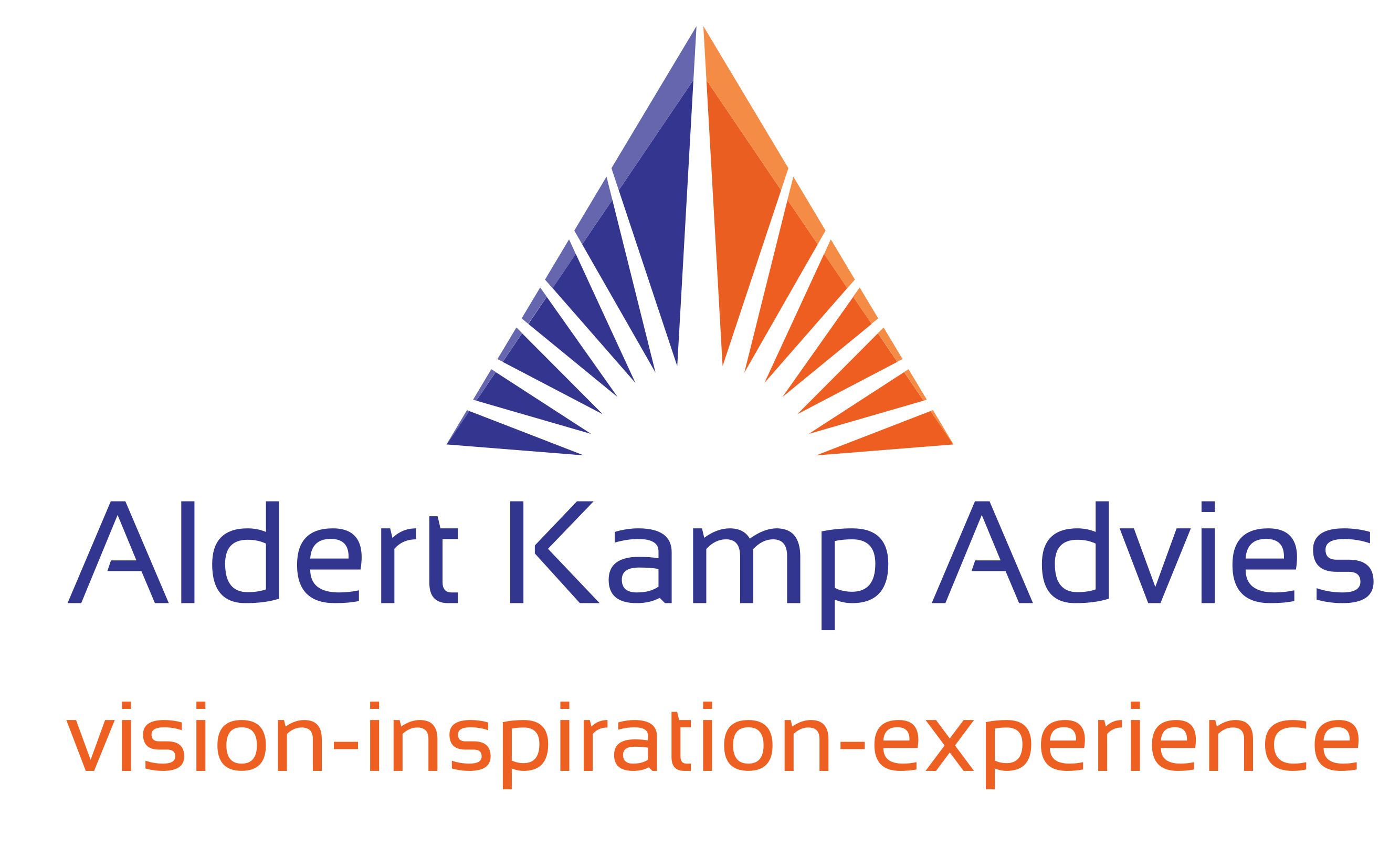
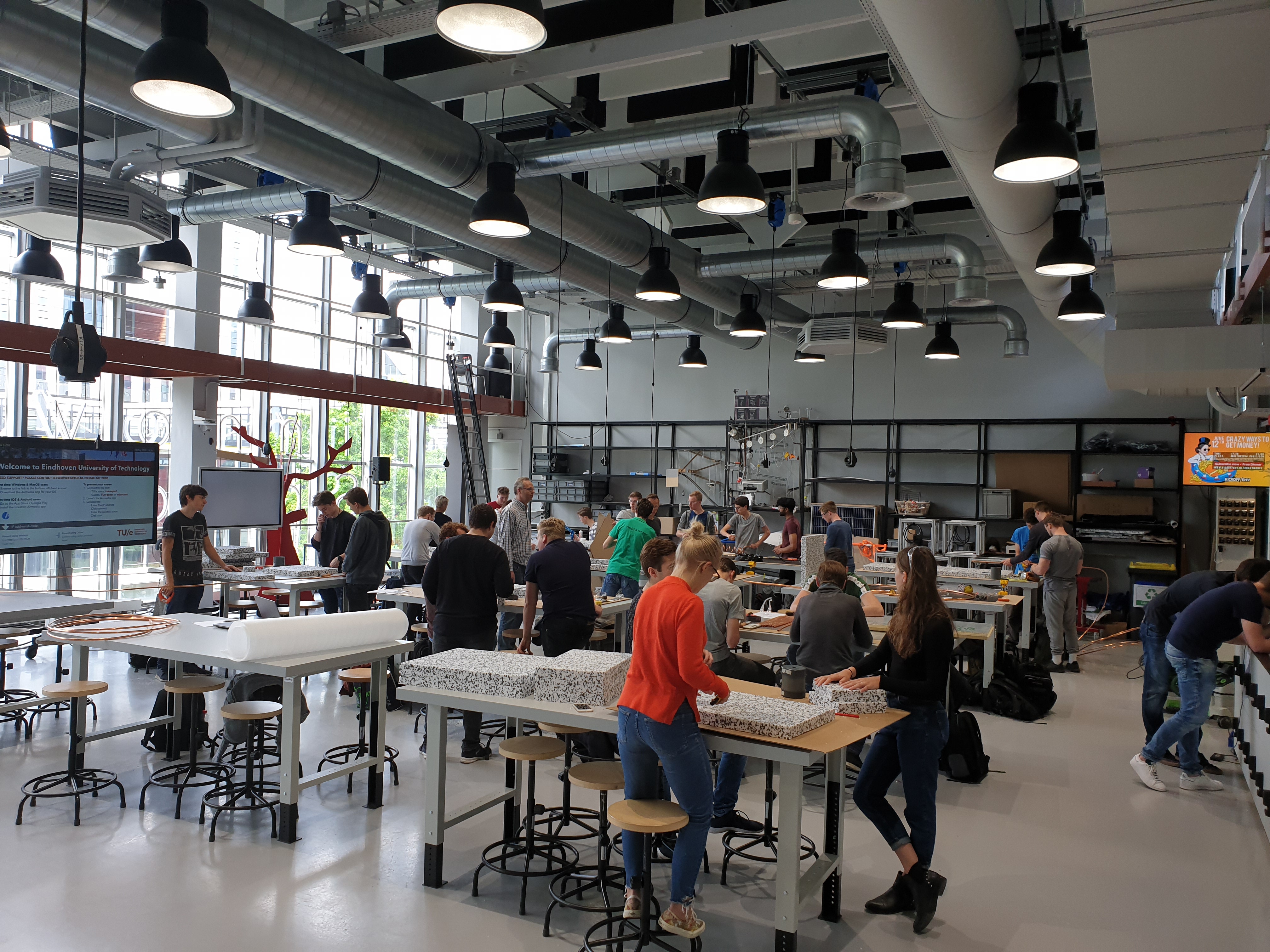 What is Challenge-Based Learning?
What is Challenge-Based Learning? 
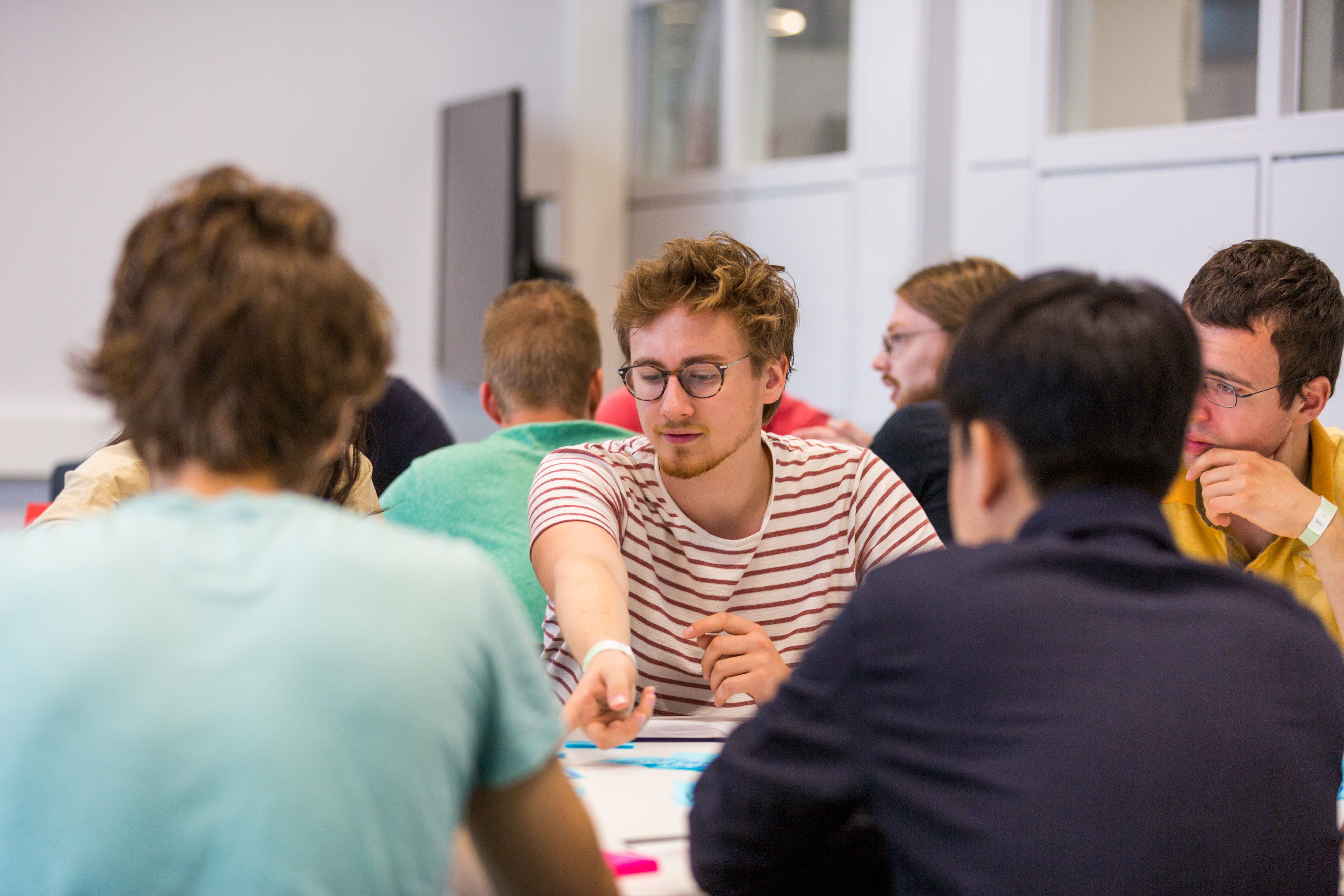
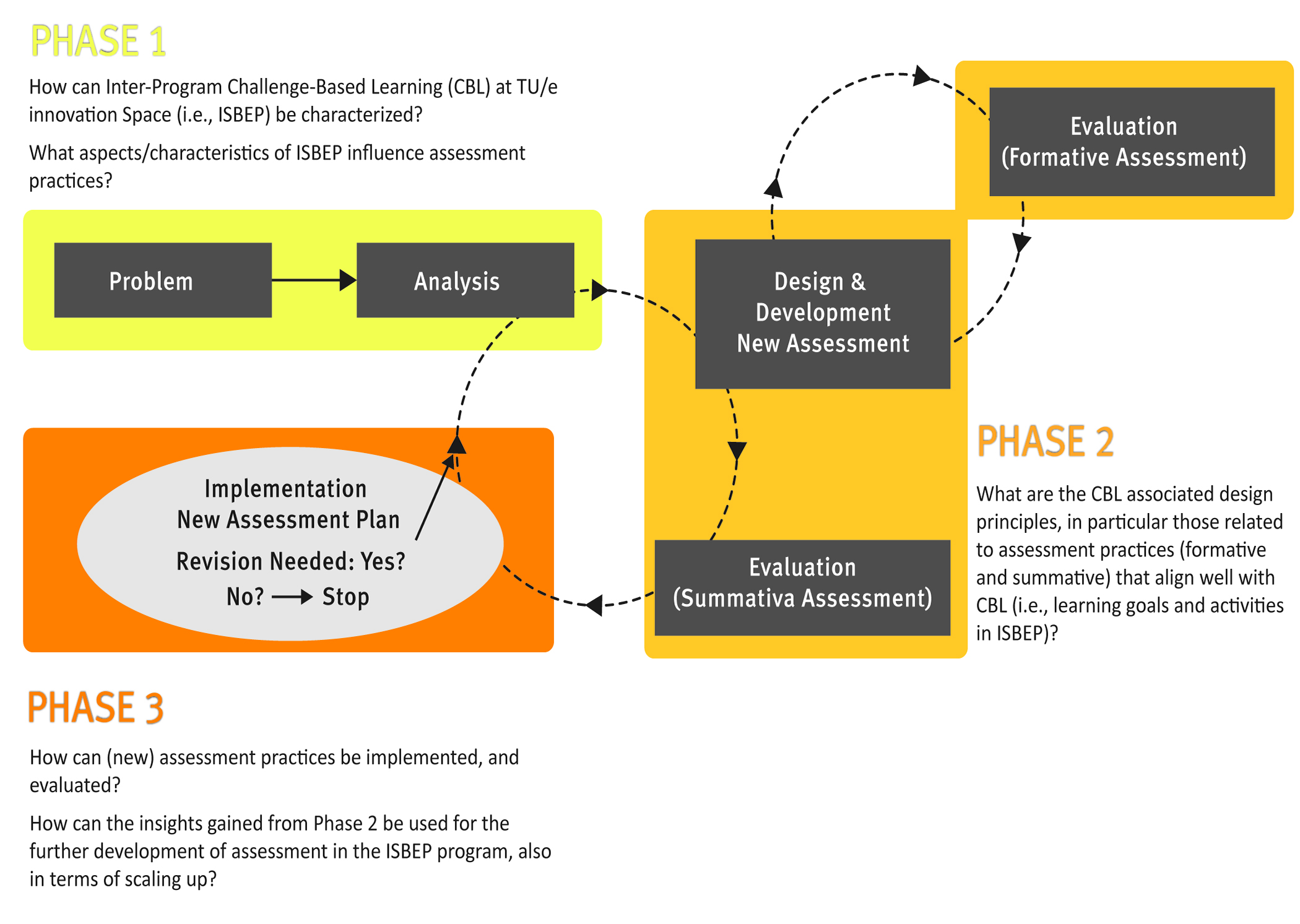
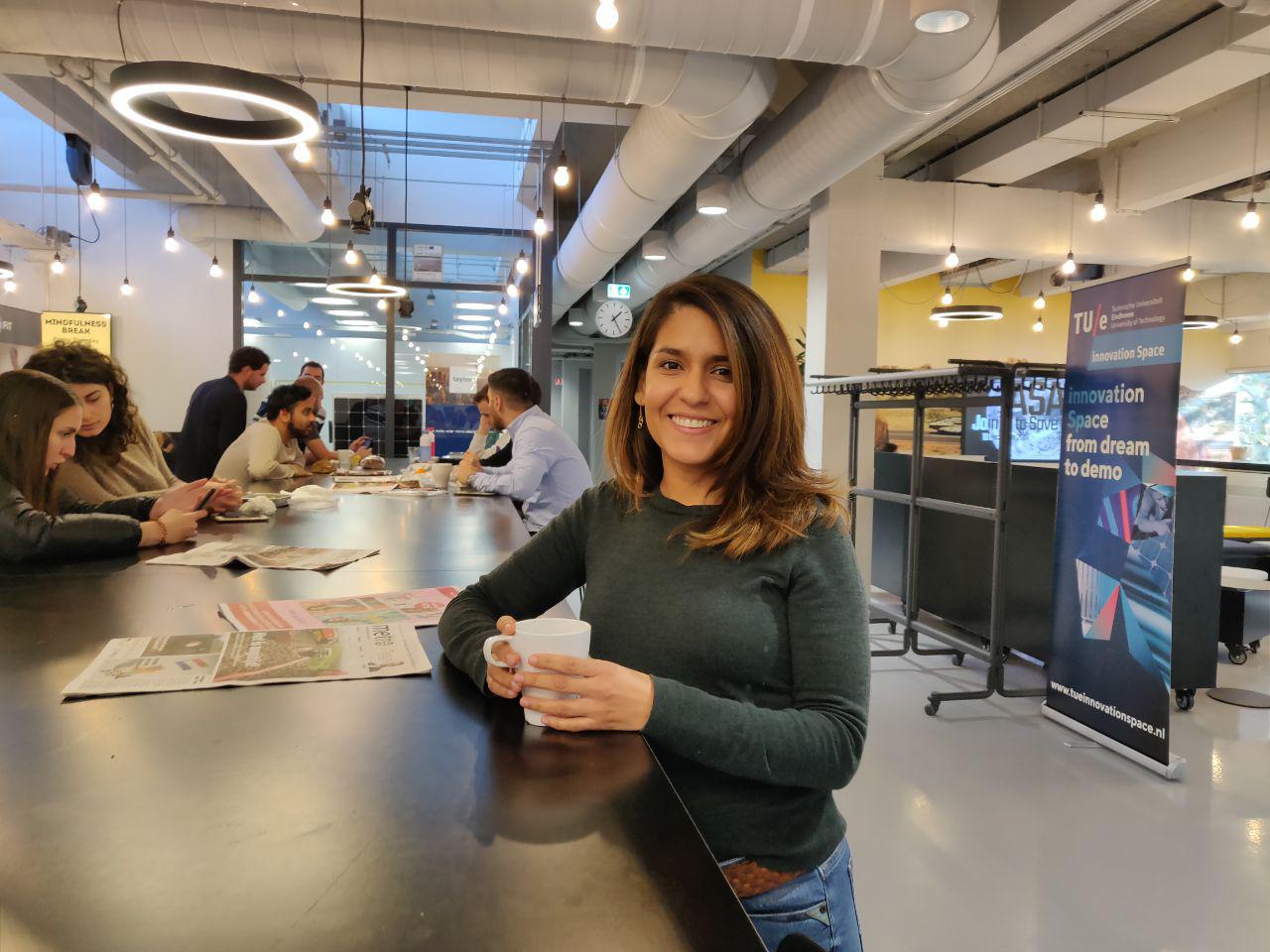
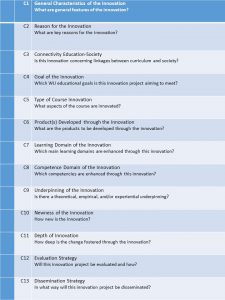

 started at Phenomea Axis and in 15 minutes Jochen Hemming showed us
started at Phenomea Axis and in 15 minutes Jochen Hemming showed us 
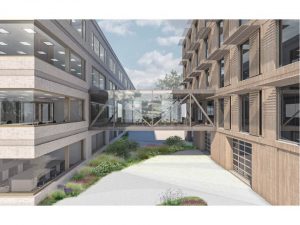
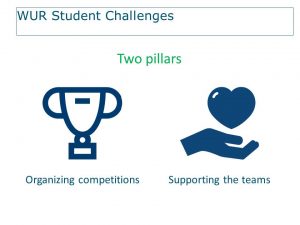 Marta Eggers was waiting there in the speakers corner. She introduced the
Marta Eggers was waiting there in the speakers corner. She introduced the 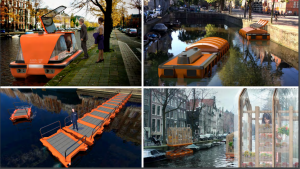
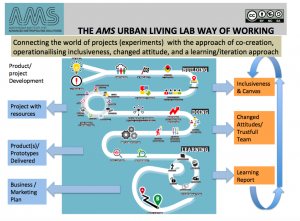
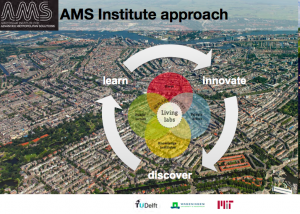
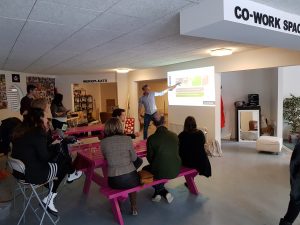 In many academic interdisciplinary projects across our universities, the assessment of the integrative interdisciplinary solutions are an issue. The concern is both about the relevance of the integration and the level of “mono”- disciplinary knowledge which is embedded and demonstrated in the final results. The “living lab” in the MADE master is even more complex than most of these interdisciplinary university courses, involving many more stakeholders, disciplines and the necessity to come to an applicable result in practice. Although the primary focus in the assessment is on the process application of the living labs, the results do matter for the companies involved in the living lab course. The assessment in itself is equally more complex. The traditional assessment tools available may not be apt for obtaining insight in the levels of learning that have actually taken place. It would be of interest to find out how in the MADE master this assessment is tackled and what we can learn from this in 4TU contexts in terms of maintaining the academic level in complex situations and the way in which we can fairly and transparently assess the process and results.
In many academic interdisciplinary projects across our universities, the assessment of the integrative interdisciplinary solutions are an issue. The concern is both about the relevance of the integration and the level of “mono”- disciplinary knowledge which is embedded and demonstrated in the final results. The “living lab” in the MADE master is even more complex than most of these interdisciplinary university courses, involving many more stakeholders, disciplines and the necessity to come to an applicable result in practice. Although the primary focus in the assessment is on the process application of the living labs, the results do matter for the companies involved in the living lab course. The assessment in itself is equally more complex. The traditional assessment tools available may not be apt for obtaining insight in the levels of learning that have actually taken place. It would be of interest to find out how in the MADE master this assessment is tackled and what we can learn from this in 4TU contexts in terms of maintaining the academic level in complex situations and the way in which we can fairly and transparently assess the process and results.